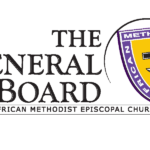On September 8, I was privileged to lead the lesson for Connectional Church School. As I prepared, God highlighted three significant themes worth sharing: where we worship, how we worship, and who we worship with.
According to the lesson, the pre-exile Jews believed God’s presence was confined to the temple. This belief shattered during their exile when they had to expand their understanding of God’s presence beyond the temple walls. The pandemic echoed this lesson: God is not confined to a building. Psalm 139:7 asks, “Where can I go from your Spirit? Where can I flee from your presence?” The answer is simple: nowhere. We can worship God in church, but also in the car, on the couch, or even at the barbershop. It’s not about where we worship but that we worship. Hebrews 10 encourages us to worship with others, but if the only place we worship is in church, we have bigger issues.
Now, let’s look at how we worship. The lesson discusses how Solomon prayed: standing with outstretched arms and kneeling before God as a sign of reverence. While we don’t have to adopt these exact postures, reverence should always be present when approaching God. But reverence isn’t a one-size-fits-all posture. As a bilateral lower-limb amputee who uses a wheelchair, I’ve often heard, “Let us stand to worship” or “Let us kneel to pray.” Does my bowed head and uplifted face show any less reverence than someone who is physically able to stand or kneel? Our outward posture does not always reflect our inward one, and we all know someone who fits this description. The lesson here is simple: don’t be offended when others revere God differently. This acceptance of diverse postures should make everyone feel respected and included in the worship community, fostering a sense of belonging and acceptance.
Part of how we worship is also reflected in how we live our lives. In the Sankofa Moment, Archbishop Dr. Rowan Williams reminds us to be trustworthy, straightforward people who tell the world the truth about God and humanity. Speaking God’s truth is an act of worship. When we tell others about Jesus’s redeeming work, we show that we genuinely love God. Similarly, acts of service, as described in Matthew 25:31-40, are acts of worship. Jesus will know who loves Him by how we help others—whether it’s feeding the hungry, caring for the sick, or advocating for justice. Service is worship in action, and it should inspire us to continue these acts of worship daily, instilling a sense of inspiration and motivation in our worship community.
This brings us to the third and final point: who we worship with. In the Life Application, we read: “Now is a wonderful time for believers to examine their attitudes to people of different races and religions. Can we see these “foreigners” whose beliefs and lifestyles differ from ours as children of God? Do we appreciate that, like us, they need God’s favor and protection? Do we see that under the second and great commandment (love others), we owe “foreigners” a duty of love, God’s love?” The word “foreigner” here is a loaded term, in my opinion. It’s easy for us to dismiss people because “they’re not like us” when they aren’t in the church but what about when they are? The question “Can we see these ‘foreigners’ whose beliefs and lifestyles differ from ours?” is one we, as a connectional church, must take seriously and answer honestly.
At the 2024 General Conference, various iterations of these questions hung in the air—motions were passed, others failed, and some legislation never even reached the floor. But these are not just theoretical questions. We need to wrestle with what it means to worship together in the covenant community and seriously reflect on our attitudes toward those different from us both in and outside the church.
This need for honest reflection should make us all self-aware as we consider our attitudes and actions in the context of our worship and community. Can we, as The Church, answer these questions with an open heart? Are we ready to answer in the affirmative? And if not, how do we get there?
Worship is not confined to a space or a single posture. It’s expressed in our everyday lives, acts of service, and willingness to embrace those different from us. As we progress as a Connectional Church, let us continue to wrestle with all of these thoughts and questions. They are crucial to our covenant relationship with God and one another.





